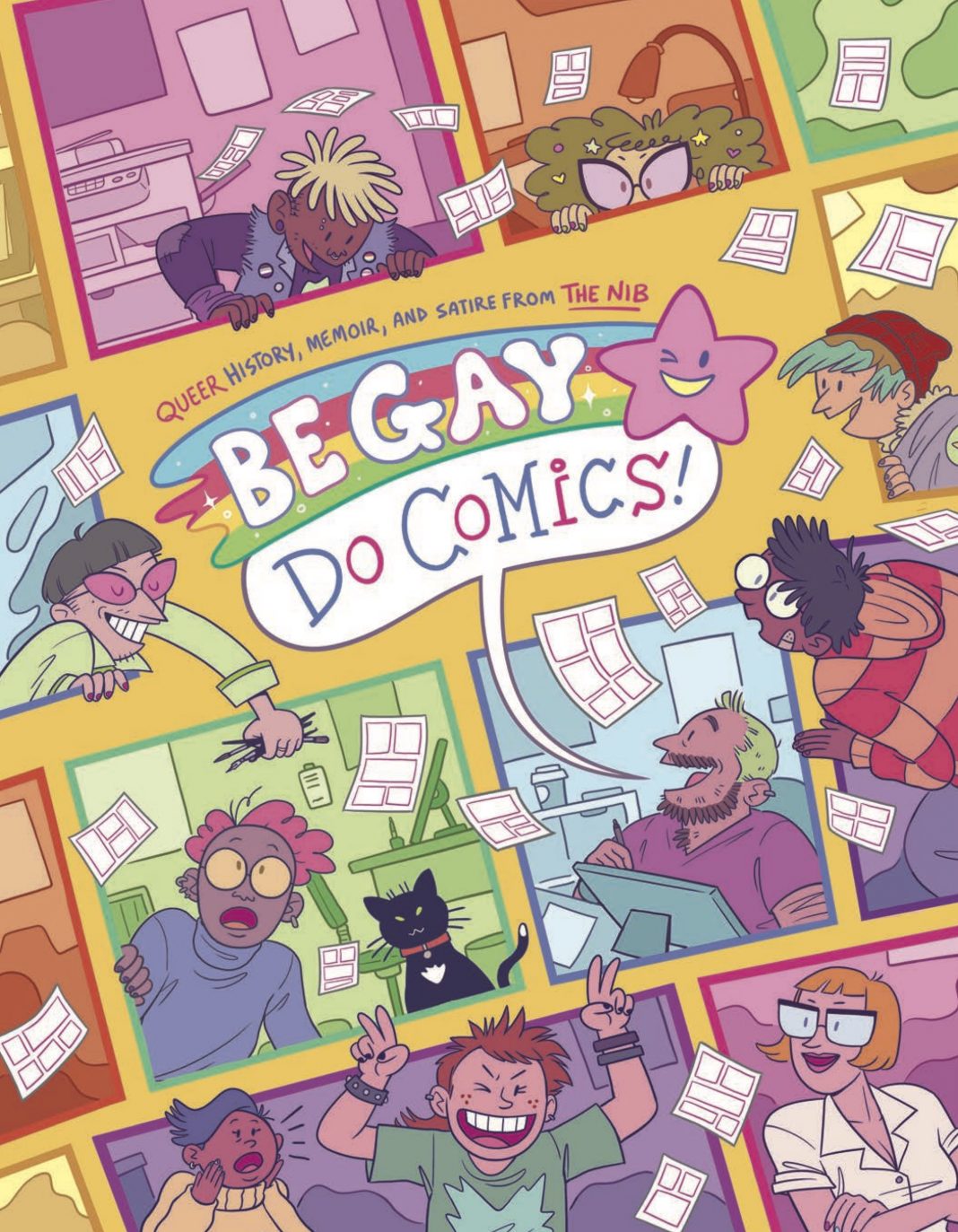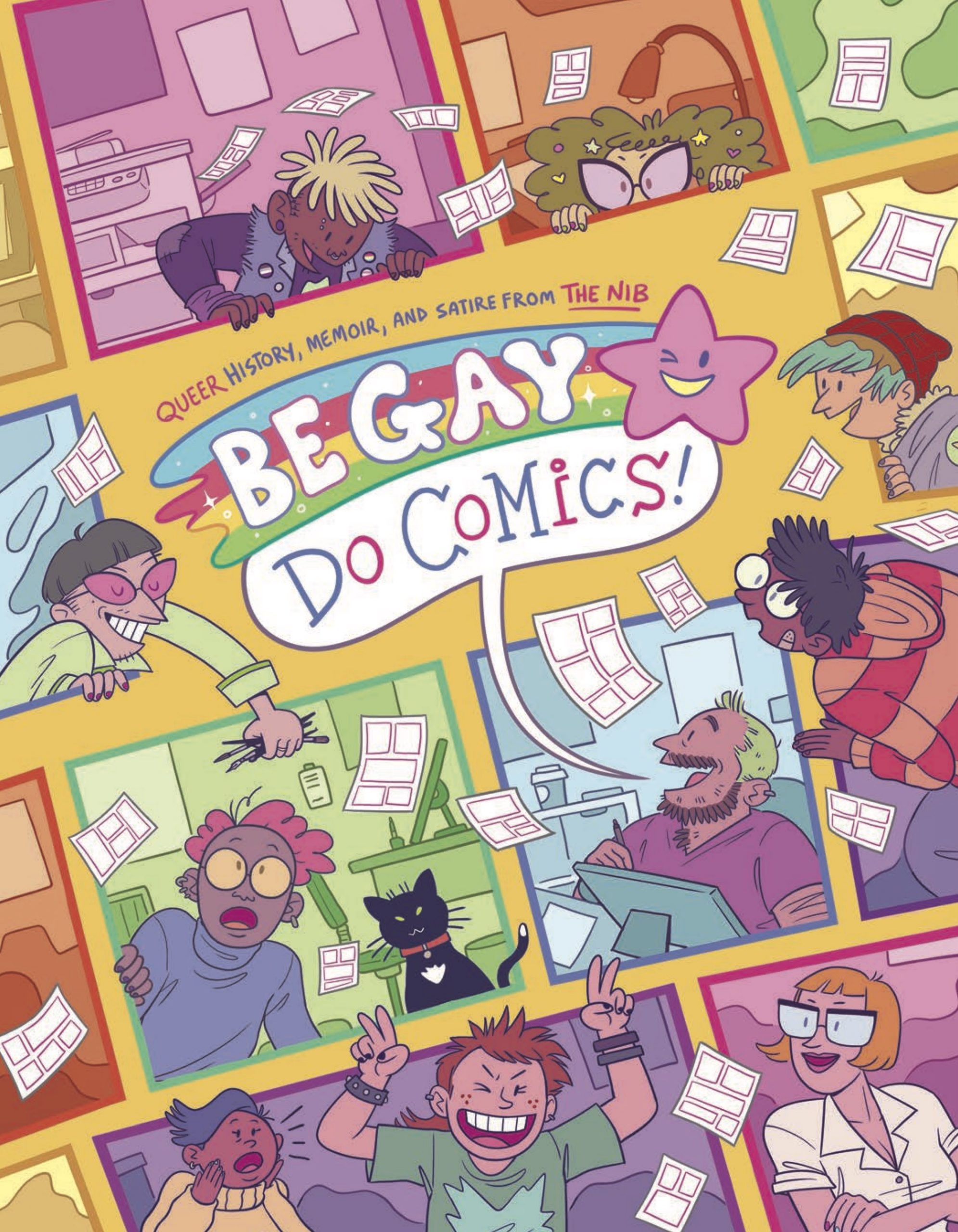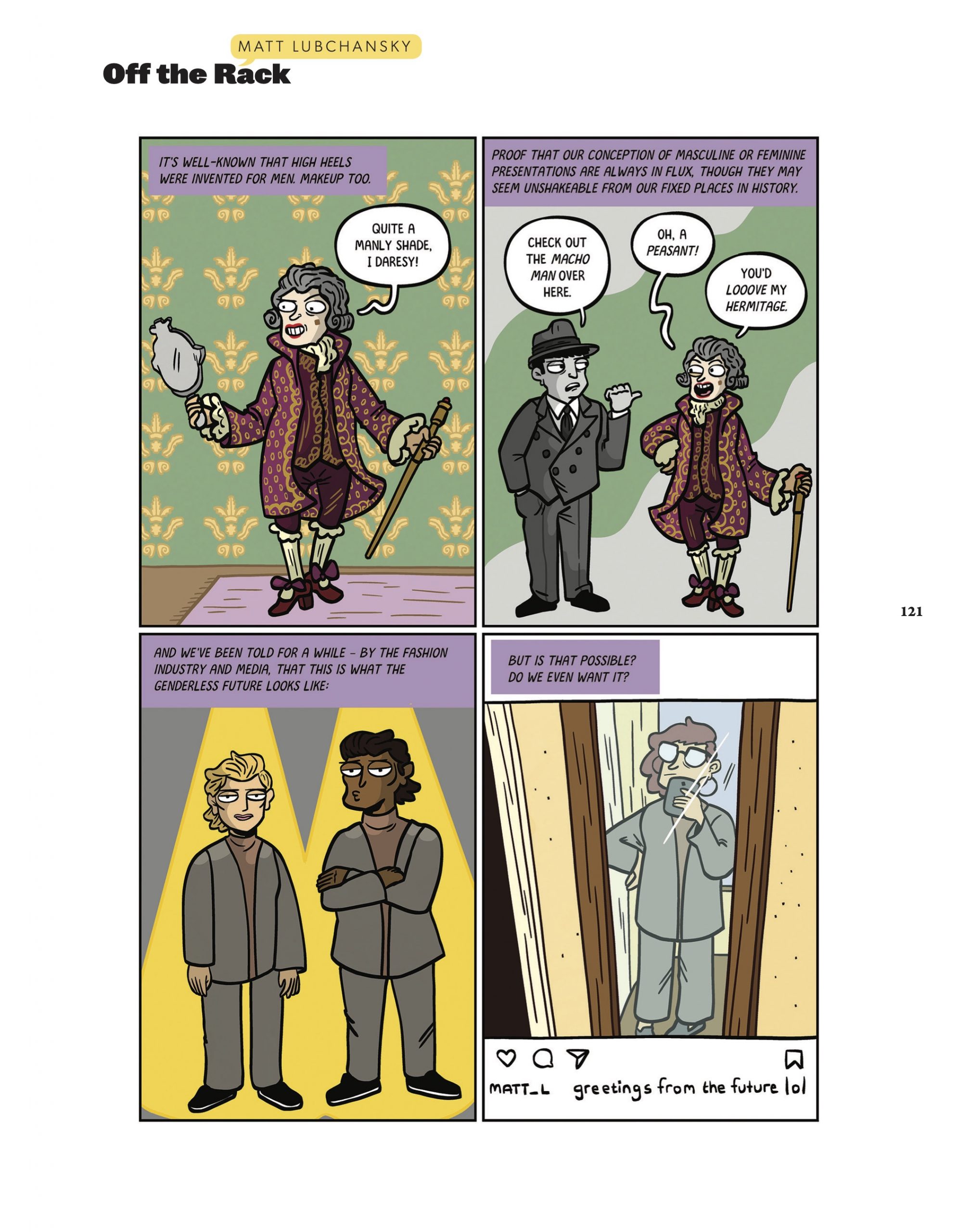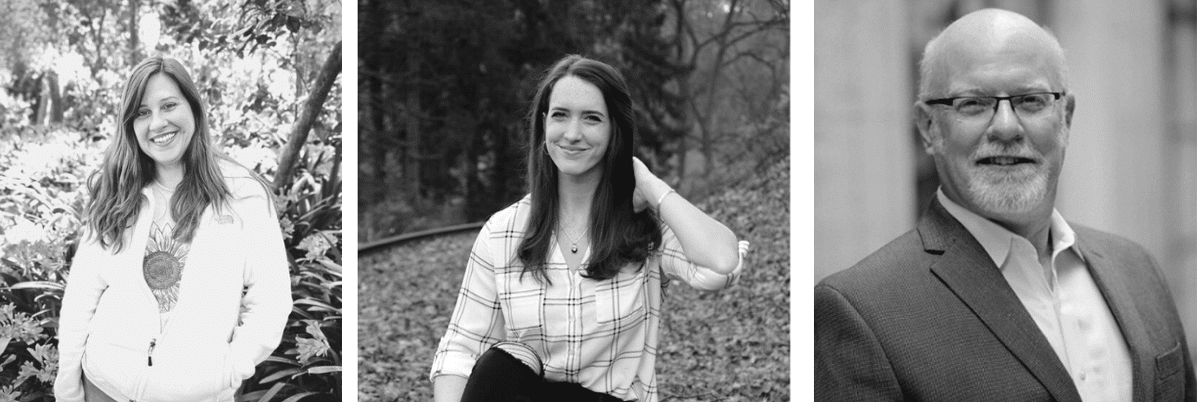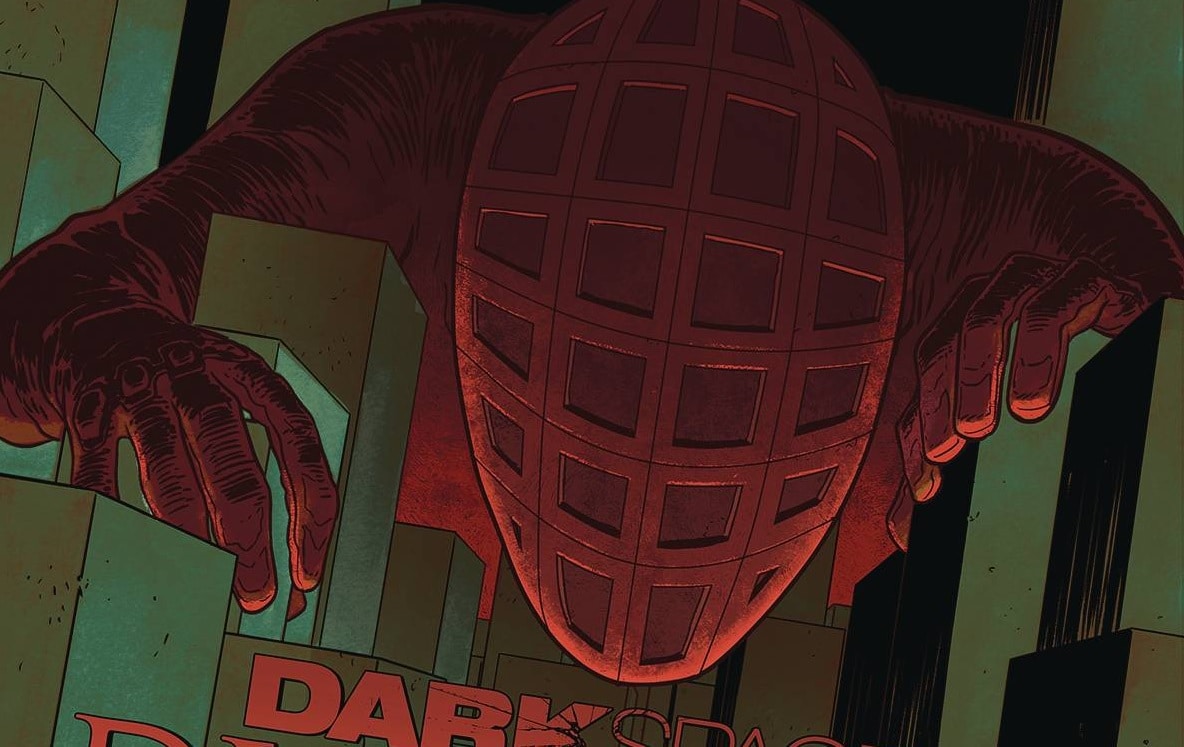After its successful first anthology Eat More Comics!: The Best of The Nib in late 2015, the team has returned with another eclectic collection of queer non-fiction stories. Be Gay, Do Comics is a 250-page graphic novel brimming with LGBTQIA stories, both derived from historical events and personal experiences, published in partnership with IDW earlier this month.
The Nib is known for its unassuming, witty, and satirical comics, and has long advocated for initiating discussions about heavy topics centered around gender. With over six years under its belt, the team has gone from being understaffed and choking for funds a few years ago to having its third hardcover collection underway today. The team also prints issues independently and is still a member-supported publisher with contributing artists from across the world.
For Matt Lubchansky, associate editor of The Nib, compiling The Nib’s stories for Be Gay, Do Comics “seemed like a natural fit,” owing to many queer contributors on deck. The graphic novel features over 30 cartoonists like Hazel Newlevant, Joey Alison Sayers, Maia Kobabe, Breena Nuñez, Sasha Velour, Shing Yin Khor, Levi Hastings, Mady G, Bianca Xunise, Kazimir Lee, Lubchansky and more.
Lubchansky wrote Be Gay, Do Comics’ introduction where they openly talk about changes in the queer community not being permanent, or at least, not enough. In it, they say, “We’re always one election cycle away from being used as a wedge issue.” Finding a supportive environment became a priority, and they believe people will have to be more vigilant as the State becomes increasingly accepting. “Comics are accessible in a way that other forms of media could only dream of being,” they write. “I can’t think of a medium where queer voices are more thriving.”
The title Be Gay, Do Comics is inspired by a meme “Be Gay, Do Crime” popularized by Io Ascarium of ABO Comix, a collective that sells comics created by queer prisoners. Where credit’s due, Lubchansky likes to direct people towards ABO, even in the book’s introduction. On why the team decided to seek permission from Io to use a morphed version for the novel’s title, they said, “It’s like a call to action, but like ‘make stuff and then read it’.” They added, “Comics has always been this place that marginalized people found themselves in, it’s an accessible medium for both creators and readers.”
The stories in the novel date back to the Holocaust in Germany, jump forward to the commemorative Stonewall riots New York City, Tove Jansson’s Moomin legacy that originated in Finland. One of the more recent events in queer related hate-crime involving actor Jussie Smollet is also featured. “I think this book specifically is the sort of diversity that we represent in our very large pool of contributors from all over,” Lubchansky said. “When you’re talking about queer history, it’s important to talk about racism, to talk about all the different intersecting ways that people are marginalized.”
With Be Gay, Do Comics out for everyone to read this year, Lubchansky is hopeful readers will begin seeking hidden stories. “We’re still at a point where it’s not considered important history that you learn,” they said. “So much of queerness is inextricably linked with what’s sort of seen as perversion or criminality; I think so much of queer history is buried and you have to seek it out.”
“I hope people get it.”
Here are some pages from the book:
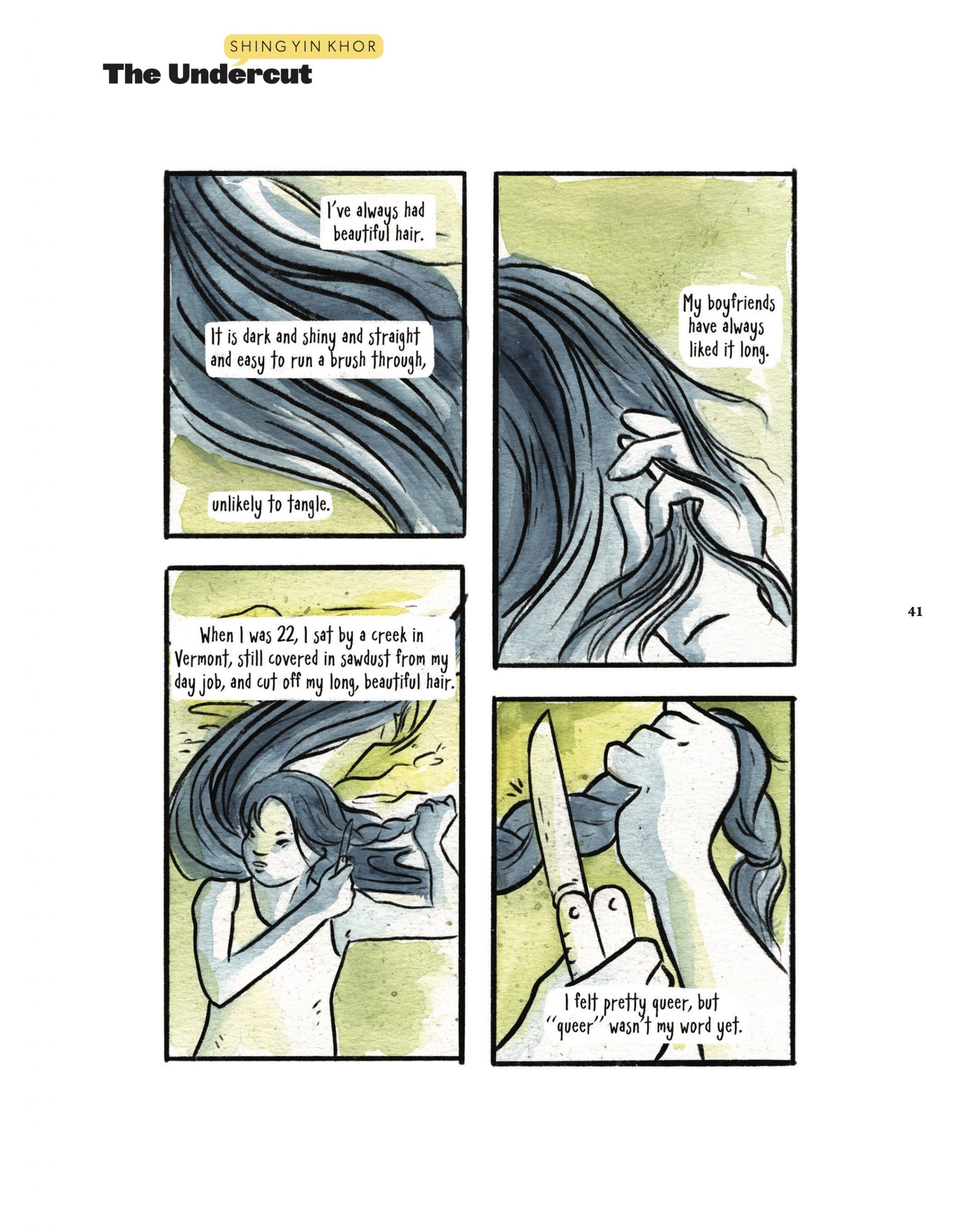
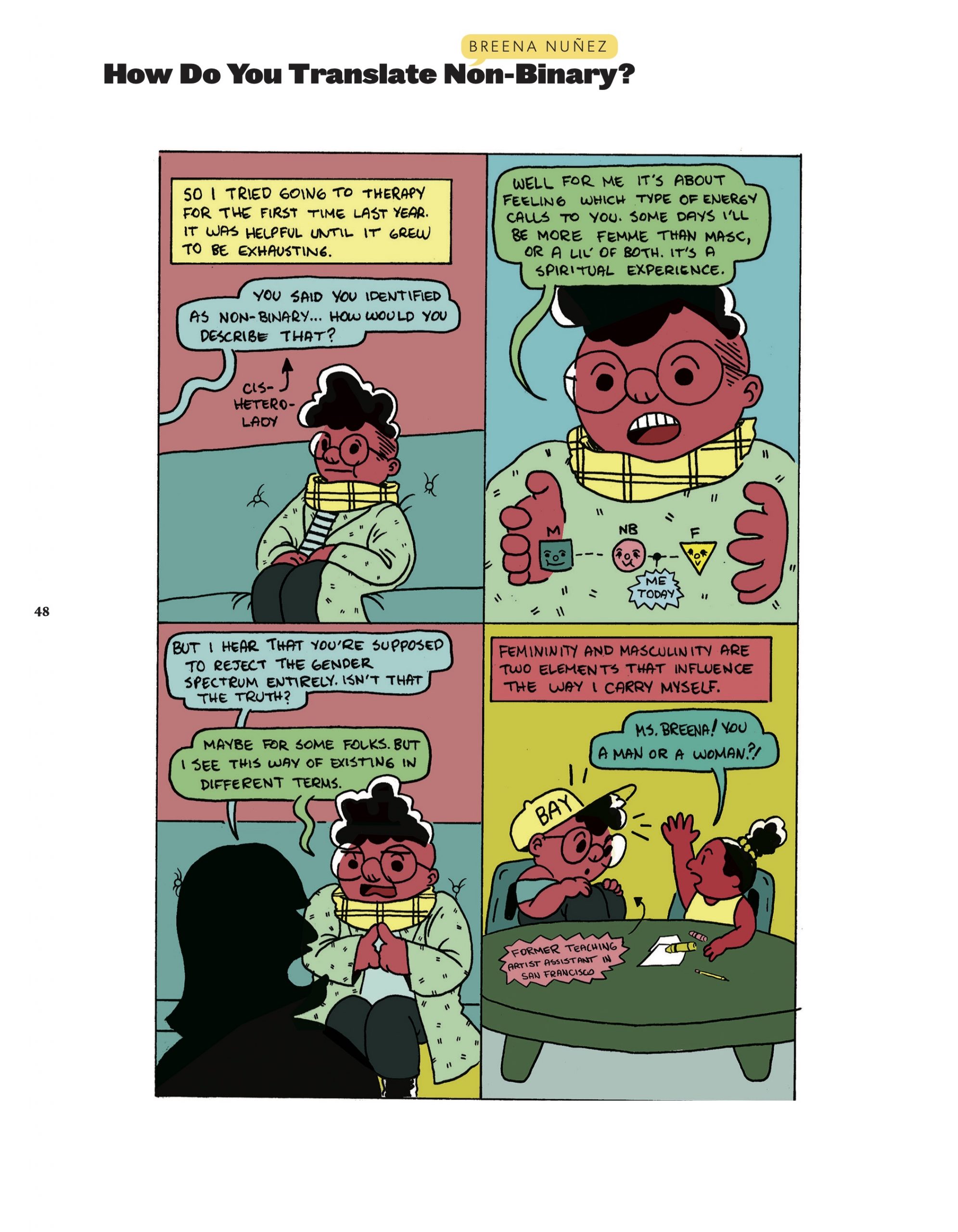
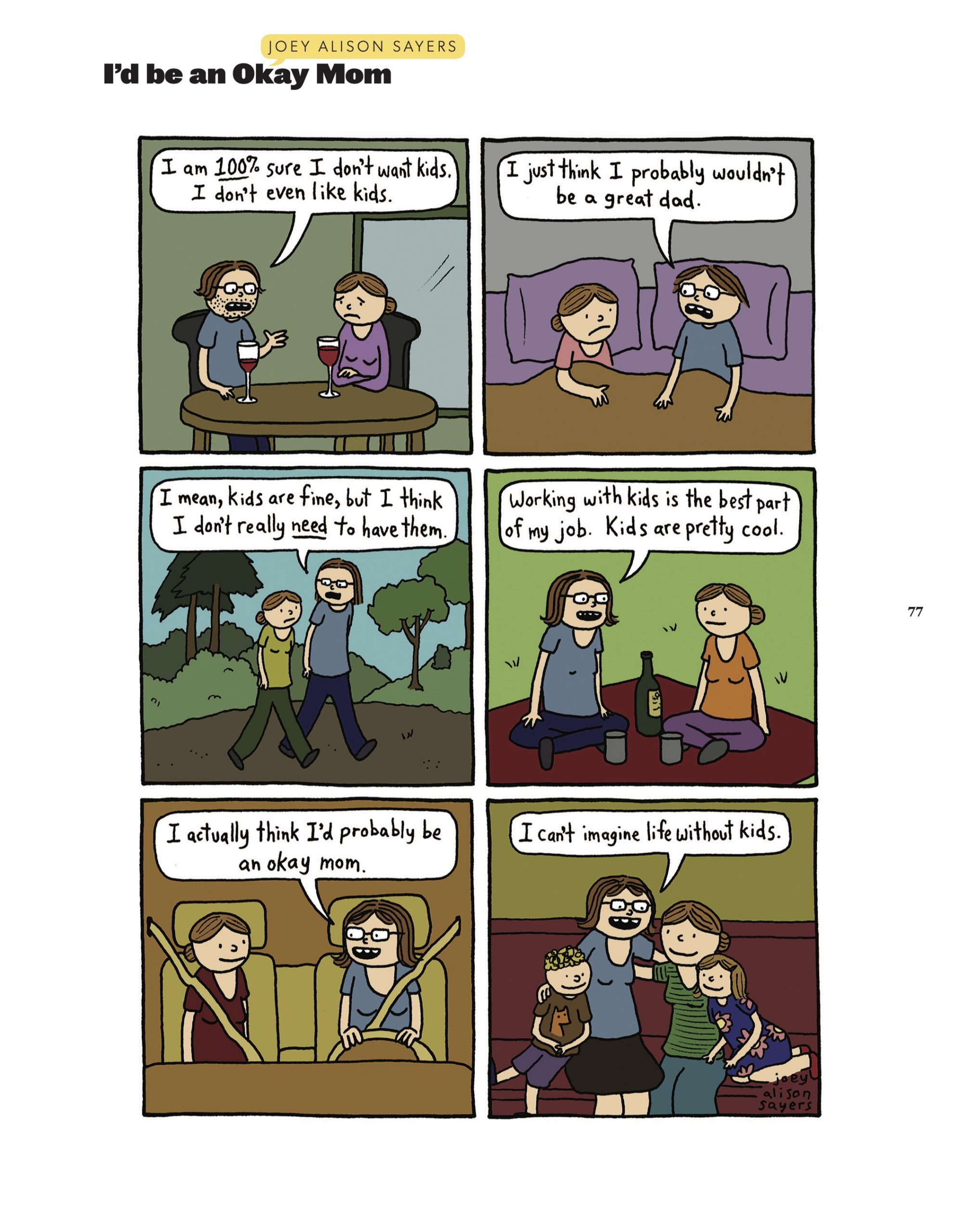
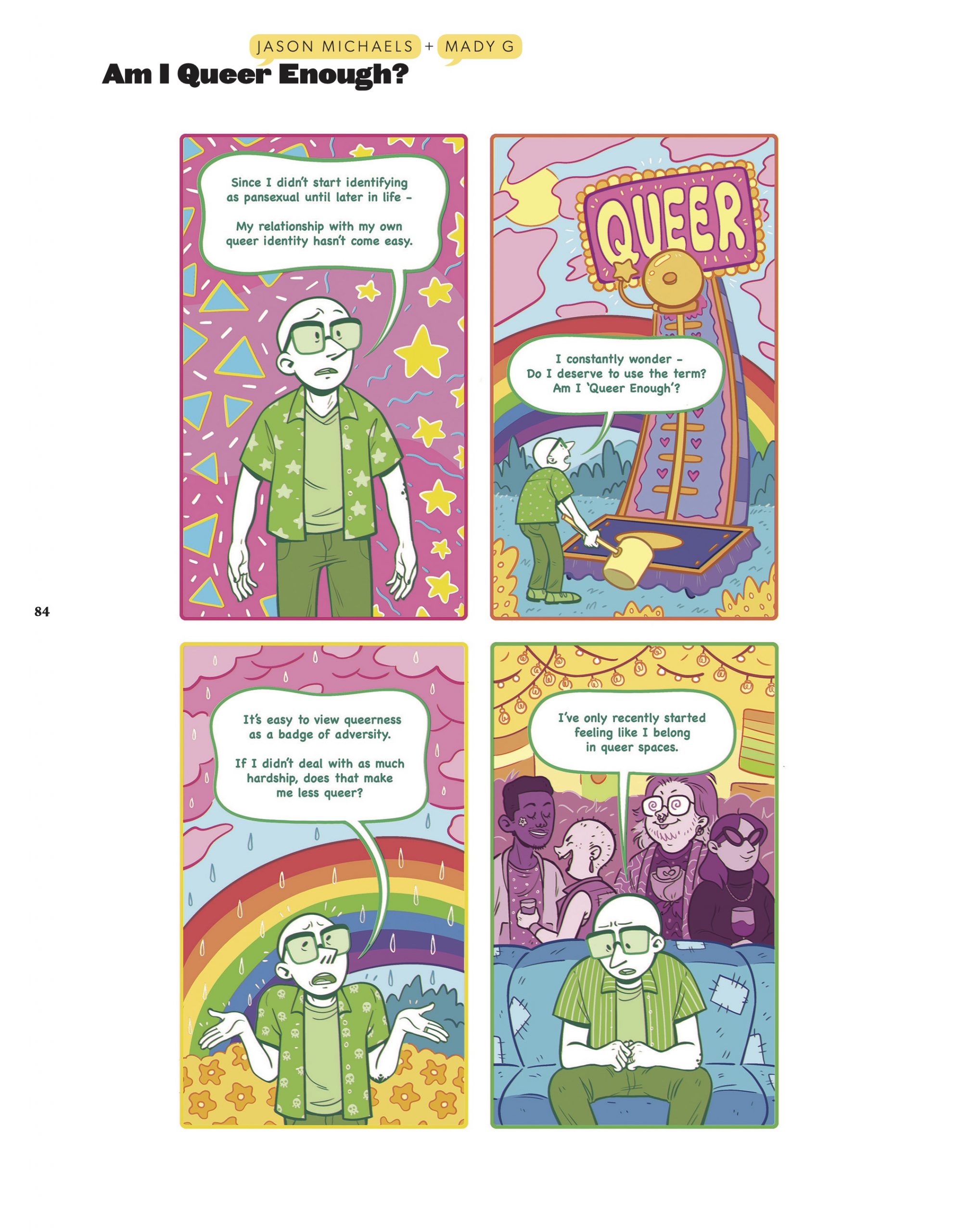
(Edited 9/16 3:00 PM Eastern: an earlier version of this article incorrectly referred to Matt Lubchansky using he/him pronouns; Lubchansky uses they/them pronouns. The Beat apologizes for the error.)


